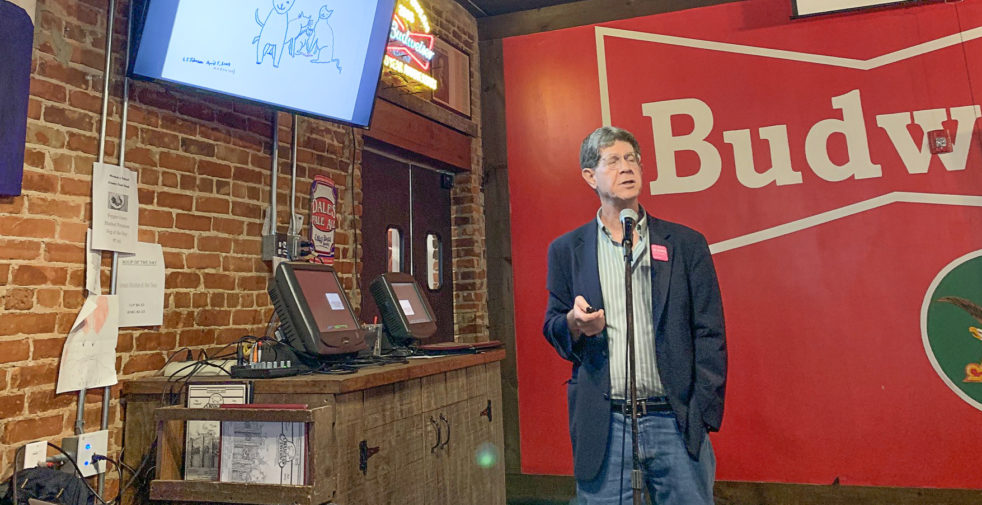Some people have got it all figured out: they have known what they want to do and how they want to do it since day one. Others haven’t got a clue: they are still searching for their calling and wonder if they ever will find it. Some may even wonder if such a thing even does exist.
An early love and fascination for astronomy placed Michael Lemonick into membership of the first group. A failing grade in an introductory course in astronomy then transferred Lemonick’s membership into the second club. This same Lemonick would just years later become a leading science writer and the Chief Opinion Editor at Scientific American.
On March 13, 2019, the College of Sciences hosted Michael Lemonick for an event Lemonick dubbed “How a Failed Astrophysics Major Became a Successful Science Writer.” Lemonick shared his story of dramatic transformation, explaining how despite — and maybe even because of — the twists and turns that curved his path, he has never failed to give up his pursuit of uncovering the mysteries in the world.
Lemonick’s desire to study science was sparked at a young age, with his father serving as an influential figure in his life. As a physics professor and administrator at Princeton University, his father knew how to present science in a relatable manner not only in the classroom, but also at home.
“[My father] did not make me do any math, he did not make me solve any problem sets, we didn’t go into the lab… what he did was told me stories,” Lemonick recalled. “He got me excited about the awe and the majesty and the spectacular stuff going on in the universe, from the very largest scale to the very smallest scale.”
Fast-forward several years later, and Lemonick would discover that the awe and majesty of science were not always translated into science classes. He recalled the way in which conventional educational methods — with their dry textbooks, tedious problem sets and irritating lab instructions — often diluted the true wonders of science. Discouraged and frustrated, he failed his introductory astronomy course and was forced to change majors.
Lemonick cited his lack of self-knowledge as the source of most of his difficulties. After graduating from college with a degree he did not care for, he moved back into his parent’s home and took a job as a delivery driver. Given his educational dilemmas, he did not know how to marry his interest in science with a profession. Lemonick attributed a strange, yet powerful force that worked to change the course of his life and guide him back to his early goals of pursuing science.
“Almost like magic in the late 1970s, the field of science journalism suddenly emerged from obscurity to be everywhere. The New York Times, which has a science section every Tuesday, created that section at that time. So did The Washington Post,” Lemonick shared.
Now armed with a clear goal in mind — and with the help of a little magic — Lemonick was able to pave his path to success. With his newfounded ambitions, he was no longer discouraged by the unknown. He worked his way up from the bottom: he started working at a local newspaper and covering municipality operations until he was accepted into Columbia University’s School of Journalism. To date, he has held senior staff positions at Time, Climate Central, and Scientific American.
Today, after overcoming many obstacles, Lemonick has achieved his childhood dream of uncovering the mysteries in the world. He meets with prominent researchers and communicates their discoveries to his readers. He attributes his ability to not only grasp complex scientific findings, but to also present them to others as resulting from the awe and majesty of science that has once again captivated him.
Some people think they have got it all figured out, and others think they haven’t got a clue. As Lemonick’s intriguing story demonstrates, there exists no set path to a destination. Twists and turns can — and will — bend that path. It is an insatiable yearning to learn and grow that will lead travelers back on course, and onto their next adventure.
